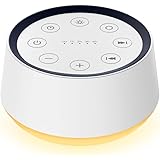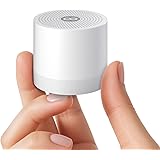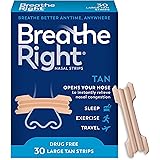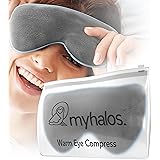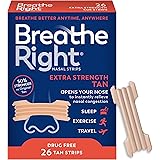What Type of Mattress Do Side Sleepers Need for Optimal Comfort and Support?
Imagine waking up, not with a refreshed sigh, but with a familiar ache in your shoulder or a stiffness in your hip. This scenario is all too common for side sleepers, and often, the culprit isn’t a bad night’s sleep, but rather an unsupportive mattress. As the video above succinctly highlights, side sleepers have distinct needs when it comes to their sleep surface. It’s not just about a softer feel; it’s about strategic pressure relief and unwavering spinal alignment.
For those who spend their nights curled up or lying on their side, the interaction between your body and your mattress dictates much more than just comfort. It directly influences your musculoskeletal health and the quality of your restorative sleep. Selecting the right mattress for side sleepers is not merely a preference; it’s a critical health decision.
The Critical Imperative: Pressure Relief for Side Sleepers
Side sleeping creates specific pressure points where your body makes the most contact with the mattress. These are primarily your shoulders and hips. When a mattress lacks adequate give or conforming properties, these areas bear the brunt of your body weight, leading to discomfort, pain, and even numbness. Think of your body like a complex bridge: if the supports at either end (shoulders and hips) are not properly cradled, the entire structure sags, leading to structural stress in the middle (your spine).
A mattress designed for side sleepers must excel at distributing this pressure evenly. It needs to allow your shoulders and hips to sink in just enough, preventing them from pressing against a rigid surface. This gentle contouring is paramount. Without it, you’re essentially sleeping on an unyielding plane, forcing your sensitive joints into unnatural positions for hours on end. This sustained compression can impede circulation and cause significant localized pain, disrupting your sleep cycle.
The goal is to alleviate these high-pressure zones. A softer initial feel is often beneficial because it allows for immediate give and contouring. However, this softness must be balanced with underlying support to prevent a hammock effect, which would throw your spine out of alignment.
The Role of Comfort Layers: Why Thick Memory Foam Isn’t Just a Suggestion
The video points out the value of thick memory foam on top. This isn’t arbitrary advice; it’s rooted in the very science of viscoelasticity. Memory foam, known for its conforming properties, excels at pressure distribution. When you lie on memory foam, your body heat softens the material, allowing it to mold precisely to your unique contours. This cradling effect is especially beneficial for side sleepers as it provides customized support exactly where your shoulders and hips need to sink in.
A sufficiently thick comfort layer, typically comprising 3 to 5 inches of memory foam or similar conforming materials, is crucial. A thinner layer might bottom out, meaning your body would still press into the firmer support layers beneath. This defeats the purpose of the pressure-relieving top. The density of the memory foam also plays a significant role; higher density foams often offer better durability and more consistent pressure relief over time, while open-cell structures can improve breathability.
Beyond memory foam, other materials are utilized in comfort layers to achieve similar effects. Specialized polyfoams can offer a quick-response contouring feel, while certain latex formulations provide resilient pressure relief with an added bounce. The key characteristic of any effective comfort layer for a side sleeper is its ability to adapt to the body’s curves, preventing painful pressure points while maintaining consistent support.
Beyond Foam: Exploring Diverse Mattress Types for Side Sleepers
While memory foam is often highlighted, the ideal mattress for side sleepers can come in various constructions. Understanding these options helps in making an informed decision:
Memory Foam Mattresses: The Conforming Embrace
Pure memory foam mattresses are renowned for their deep contouring and excellent motion isolation. They are often a top recommendation for side sleepers due to their unparalleled ability to relieve pressure points. The viscoelastic material softens and molds around the body, reducing stress on the hips and shoulders. However, some traditional memory foams can retain heat, which is a consideration for warmer sleepers. Modern memory foam designs often incorporate cooling gels or open-cell structures to mitigate this issue, enhancing airflow and thermal regulation.
Latex Mattresses: Resilient Contouring with a Bounce
Latex offers a different kind of contouring. It’s more responsive than memory foam, providing a buoyant feel while still alleviating pressure. This material instantly springs back into shape, which can be preferred by those who dislike the “stuck” feeling sometimes associated with traditional memory foam. Natural latex, derived from rubber trees, is also celebrated for its durability, breathability, and hypoallergenic properties. Both Dunlop and Talalay latex offer excellent pressure relief for side sleepers, with Talalay often providing a slightly softer, more consistent feel.
Hybrid Mattresses: The Best of Both Worlds
Hybrid mattresses combine the best features of innerspring and foam mattresses. They typically feature a base layer of individually wrapped coils (pocketed coils) topped with substantial comfort layers of memory foam, latex, or specialized polyfoams. For side sleepers, hybrids offer an attractive balance: the robust support and airflow of coils, coupled with the pressure-relieving properties of advanced foams. The pocketed coils provide targeted support and excellent motion isolation, which is beneficial for couples. Furthermore, the coil base often contributes to superior edge support, making the entire surface of the mattress usable.
Firmness Finesse: Dialing in the Right Feel
The concept of “softer” for side sleepers needs further clarification. It’s not about sinking into a shapeless cloud, but rather about achieving a firmness level that allows for adequate contouring without sacrificing support. Generally, a medium-soft to medium firmness (around a 5-6 on a 10-point scale, where 10 is the firmest) is ideal for most side sleepers.
A mattress that is too firm will create excessive pressure on the shoulders and hips, preventing them from sinking in enough to maintain spinal alignment. Conversely, a mattress that is too soft will allow these areas to sink too far, causing the mid-section of the spine to sag. This is where the analogy of Goldilocks’ porridge becomes apt: the firmness needs to be “just right” – not too hard, not too soft.
Personal preference and body weight also significantly influence the perception of firmness. A heavier individual might find a medium-firm mattress feels softer than a lighter person would, simply because their weight causes them to sink deeper into the comfort layers. Lighter side sleepers often require a slightly softer mattress to activate the pressure-relieving properties effectively, while heavier side sleepers might opt for a medium-firm feel that still provides ample contouring without bottoming out.
Spinal Alignment: The Unseen Pillar of Quality Sleep
While pressure relief often takes center stage, proper spinal alignment is equally, if not more, critical for side sleepers. When lying on your side, your spine should maintain a relatively neutral, straight line from your head to your tailbone, much like it would if you were standing with good posture. An inadequate mattress will allow your spine to curve unnaturally, either dipping in the middle or arching upward. This misalignment can lead to chronic back pain, neck stiffness, and nerve compression.
A high-quality mattress for side sleepers works in tandem with the sleeper’s body to maintain this neutral alignment. The comfort layers allow the wider parts of the body (shoulders and hips) to sink in, while the support core beneath props up the narrower waist. This creates a balanced plane for the spine. Consider it like building a perfect sandcastle: the base needs to be firm enough to hold the structure, but the top layers need to be pliable enough to sculpt the intricate details. When the spine is properly aligned, muscles can fully relax, allowing for deeper, more restorative sleep and reducing morning aches and stiffness.
Key Considerations Beyond Mattress Type
Selecting the optimal mattress for side sleepers extends beyond just material and firmness. Several other factors influence overall sleep quality and comfort:
-
Body Weight and Type: Your physique significantly impacts how a mattress feels and performs. Heavier individuals typically require thicker comfort layers and a more robust support core to prevent excessive sinking. Lighter sleepers often need softer top layers to activate the pressure relief effectively.
-
Sleeping Temperature: Side sleepers can sometimes feel warmer due to more body surface contact with the mattress. Look for mattresses that incorporate cooling technologies such as gel-infused memory foam, open-cell foam structures, or breathable latex. Hybrid mattresses with their coil bases generally offer superior airflow compared to all-foam alternatives.
-
Motion Isolation: For those sharing a bed, motion isolation is crucial. Memory foam and individually wrapped coils (found in hybrids) excel at absorbing motion, meaning your partner’s movements are less likely to disturb your sleep. This is particularly important for side sleepers who might be more sensitive to movement when seeking a stable, comfortable position.
-
Durability and Longevity: A mattress is a significant investment. High-density foams, natural latex, and well-constructed coil systems typically offer greater durability. Investing in a mattress with a longer lifespan ensures consistent support and pressure relief for years, making it a more cost-effective choice in the long run.
-
Trial Periods and Warranties: Always opt for a mattress with a generous in-home trial period (ideally 90-120 nights). This allows you ample time to determine if the mattress truly meets your needs as a side sleeper. A comprehensive warranty also provides peace of mind, protecting your investment against manufacturing defects.
Choosing the right mattress for side sleepers is an intricate dance between comfort and support. It prioritizes nuanced pressure relief for the shoulders and hips, facilitates unwavering spinal alignment, and often leverages the conforming properties of materials like thick memory foam. By focusing on these core principles, side sleepers can finally find a sleep solution that promises deep, restorative sleep and awakens them free from pain.


